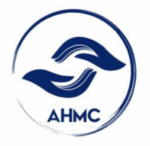As part of your regular health screening you may have recently had a cholesterol test. As you may know, the amount of cholesterol in your blood can increase your risk of developing Cardiovascular Disease (CVD).
CVD is a significant health concern worldwide, often leading to heart attacks, strokes, and other serious conditions. To combat this, healthcare professionals use various tools and medications. Two key components in this fight are the QRISK2 assessment tool and the use of statins.
Understanding QRISK2
QRISK2 is a predictive algorithm used by medical practitioners to assess the potential risk of cardiovascular disease in patients. It calculates the likelihood of a patient having a stroke or heart attack in the next 10 years. The higher the score, the greater the risk.
How QRISK2 Works
QRISK2 takes into account various risk factors for CVD, including age, gender, ethnicity, high blood pressure, cholesterol level, body mass index (height and weight), smoking, alcohol intake, and certain medical conditions such as diabetes, rheumatoid arthritis, and chronic kidney disease.
The QRISK2 score categorizes risk into three levels:
Low risk
QRISK2 score of less than 10%. This means that you have less than a one in ten chance of having a stroke or heart attack in the next 10 years.
Moderate risk
QRISK2 of 10-20%. This means that you have between a one to two in ten chance of having a stroke or heart attack in the next 10 years.
High risk
QRISK2 score of more than 20%. This means that you have at least a two in ten chance of having a stroke or heart attack in the next 10 years.
What can I do to lower my risk?
Guidance from NICE (National Institute for Health and Care Excellence) suggests that anyone with a score of more than 10% (moderate risk) should be offered help to reduce their risk. This includes advice on making lifestyle changes and if this doesn’t work or risks above 10% we offer the option of starting medication to lower cholesterol (statins).
What lifestyle changes can I make?
You may have noticed that the list of risk factors includes things we can change (such as smoking, weight and blood pressure) and things we cannot change (such as age and gender). We can therefore try to reduce our risk by taking a few simple steps including:
- Stop smoking.
- Eat a healthy balanced diet – low in fat, sugar and salt. Eat 5 fruit / veg a day.
- Reduce alcohol intake – aim for less than 14 units a week for men and women.
- Keep an eye on your weight and take steps to lose weight if needed. Aim for BMI 20-25.
- Exercise regularly (walking is a great start).
- Taking medication to reduce blood pressure if needed.
It is very likely that you will benefit from changes to your lifestyle (regardless of risk). However, we can test your cholesterol level again in 6-12 months, measure your weight, height and blood pressure and recalculate your QRISK2 score. If your score is the same, or has increased, then you would benefit from taking a statin.
Information regarding possible lifestyle changes can be found on the NHS website for cholesterol.
The Role of Statins
Statins are a class of prescription drugs that lower high cholesterol, especially LDL-cholesterol or “bad” cholesterol4. They work by blocking a substance your body needs to make cholesterol and by helping your body reabsorb the cholesterol in your arteries.
Benefits of Statins
Statins can reduce the risk of cardiovascular disease by preventing plaque and blockages in the arteries. They can reduce your LDL cholesterol by around 30%, sometimes even 50% with high doses. Lowering cholesterol isn’t the only benefit associated with statins. These medications have also been linked to a lower risk of heart disease and stroke.
Conclusion
The combination of QRISK2 and statins provides a powerful approach to managing cardiovascular health. By accurately assessing risk with QRISK2 and effectively lowering cholesterol with statins, healthcare professionals can significantly reduce the incidence of serious cardiovascular events. As always, it’s important to consult with healthcare professionals for personalized medical advice.
If you would like to further discuss the benefits of taking a stain please book an appointment with our clinical pharmacists.
Further information:
